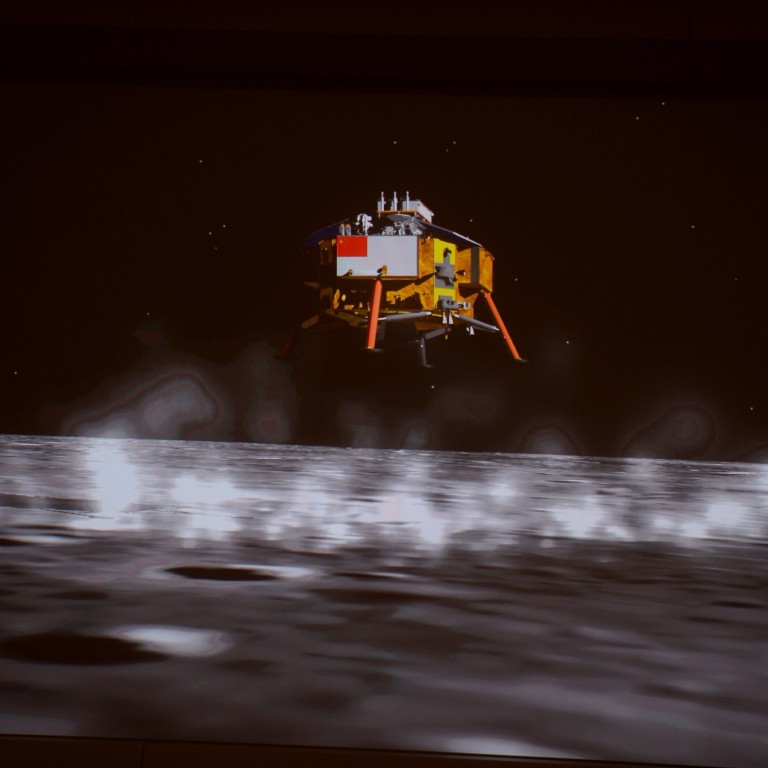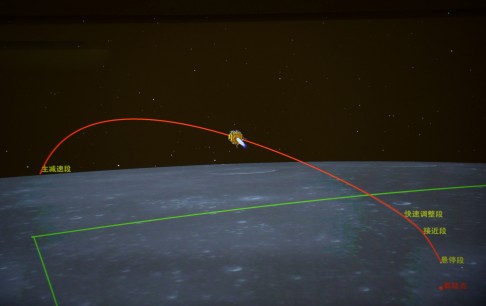
Update | One giant leap for China as Chang'e-3 probe makes perfect moon landing
Scenes of elation as Chinese probe Chang'e-3 makes a 'perfect' and historic landing on the moon
Amid a puff of lunar dust, Chang'e-3 touched down on the moon at 9.12pm yesterday, making China the third nation to land a craft on the celestial body.
Scientists erupted in cheers and some cried at the command centre in Beijing as a computerised display showed the probe had landed in a flat plain known as Sinus Iridum, Latin for Bay of Rainbows, an unvisited area in the moon's north.
Lan Xiaohui, designer of Chang'e-3's thrust engine, told CCTV "the landing was perfect".

The Chang'e-3 began its approach from an orbit about 15 kilometres above the moon. The final descent was controlled with the main engine and 28 small thrusters, which took the craft from a speed of 1.7 kilometres per second to almost zero within a few minutes.
Instruments on board allowed the probe to analyse the landing area and make adjustments from 100 metres away.
Four metres above the surface, the engine was switched off, and the Chang'e-3 went into free fall. Upon touching down, the onboard camera snapped an image of its surroundings and sent it back to operators at the Beijing Aerospace Control Centre.

Chinese space scientists and engineers were holding their breath throughout the lengthy process with fear that the force of impact on landing and the fine lunar dust might damage some critical electronic or mechanical parts.
Zhang Tingxin, chief commander of the rover system, told China Central Television that the separation was "smoother than expected".
He gave the biggest credit to the automatic landing system on Change, which found and landed the spacecraft on an almost entirely flat ground without any human intervention.
"The landing vehicle was in a very good position. After the touch down, it was standing almost entirely vertically with only one or two degrees of tilt," he said.
Lan said he was most concerned about the final 30 metres, as the spacecraft searched for the best landing spot. But the engines did a "great job", he said.
Liu Jianjun, a lunar geologist with the National Astronomical Observatories, said the level area would be good for the rover's exploration. "We have seen few shadows on the photos sent back by the landing camera. The fewer shadows, the flatter the terrain and the better for the mission," he told CCTV.
Before touchdown, the probe hovered and scanned the landing area, and moved horizontally, to secure the safest spot.
This procedure, to avoid any cracks or bumps, had not been used previously in a lunar landing and placed a high demand on rockets, sensors and software.
Wu Weiren, chief designer of the lunar exploration project, told Xinhua that Chang'e-3 had gone through the most challenging phase of the landing by itself, with "almost zero" human interference. "The biggest risk was that all the critical devices of this mission are newly developed, and there was uncertainty about the terrain of the landing zone," he said.

"The Chinese mission is a big step for China in space and an opportunity for international co-operation in the future," he said.
Dr Morris Jones, a space analyst based in Australia, said: "This mission should serve as a wake-up call to people who have ignored the Chinese space programme. Awareness of how much progress China has made in space flight is not as high on the global scale as it should be."
For many Chinese, the landing was an emotional moment. Wang Jianming, a businessman in Shanghai, said he and his family had considered moving to another country due to the mainland's severe air pollution. But the perfect landing gave him some hope.
"If the government has the money and technology to take something to the moon, they may have solutions to clean up the air a bit down here, which seems to me a task far less sophisticated and demanding," he said.


